Nothing feels as awesome as a soft fluffy towel wrapping around you as you hop out of a shower. Sadly, this warm towel hug doesn’t last long, even with new towels. Over time, towels soak in a lot of body soil, residue minerals of hard water, and detergents, among others.
Eventually, they become rough and lose absorbency. If you are having trouble with your towels, worry not. We are here to help. Read on to learn how to restore the fluffiness in your towel, tips on how to prevent it from happening, and more!
The most common ways of making towels fluffy again include washing them with hot water, treating them with vinegar, adding baking soda to the wash, or using dryer balls with them in the dryer.
How to Make Towels Soft Again
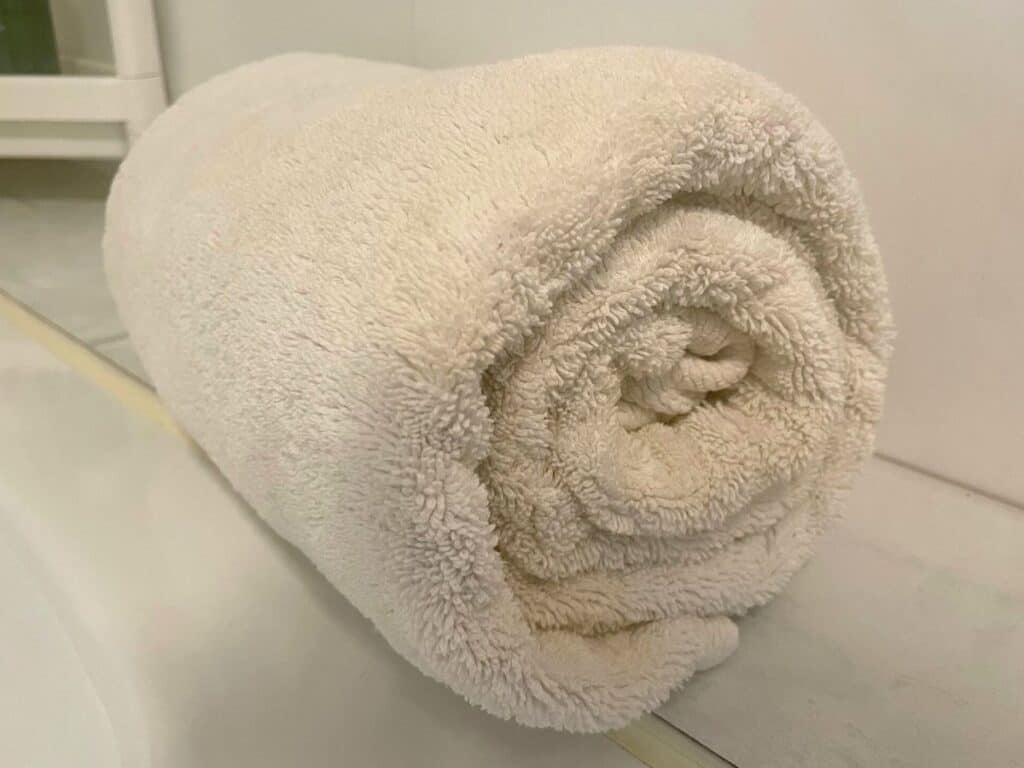
As we noted above, several methods can be used to fix rough towels. The internet is awash with so many methods, some of which are unworkable. But we’ve curated some of the tried and tested methods that not only work, but some only take a short time to restore the fluffiness.
Softening With Vinegar
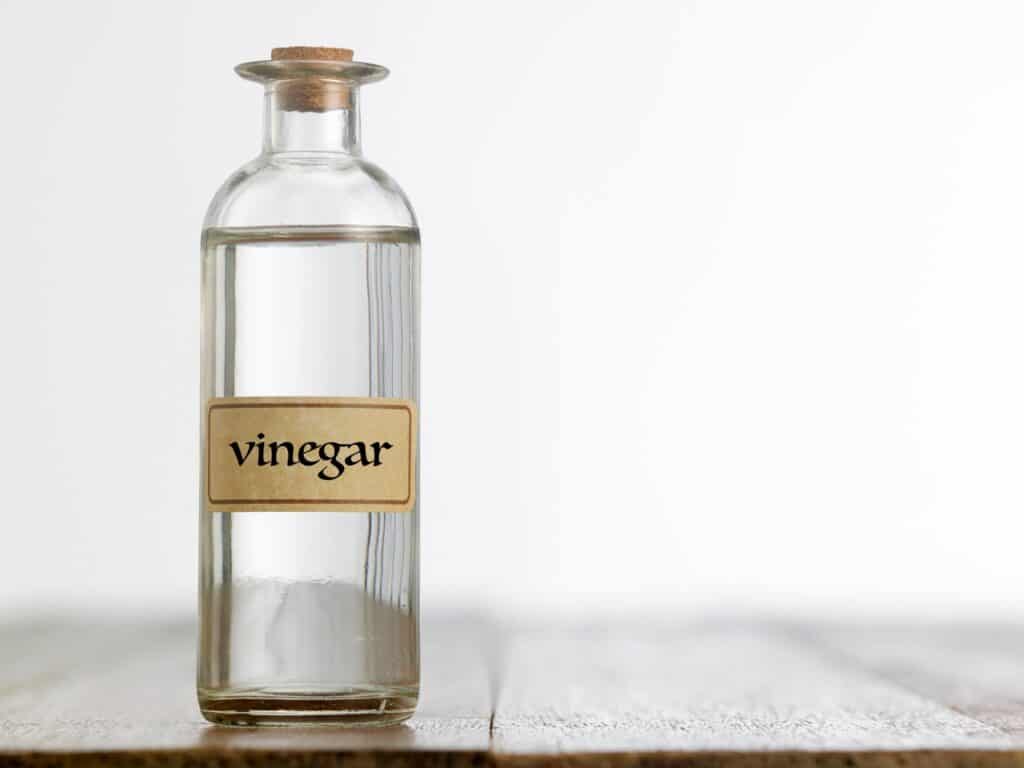
Vinegar is one of the cleaning agents that can help in towel softening and restoring fluffiness.
To soften with vinegar:
- Add ½ a cup of white vinegar during the first rinse cycle, and run as usual.
- Note this dosage is for normal washes.
- Increase the dosage with the increase in the load size.
Once in the rinse solution, the vinegar strips the clothes off all detergent, or chemical residues that cause roughness, leaving a softer and fluffier feel. Notice we recommend white vinegar and not other varieties. Use only white vinegar to reduce the risk of clothes staining.
Using Baking Soda
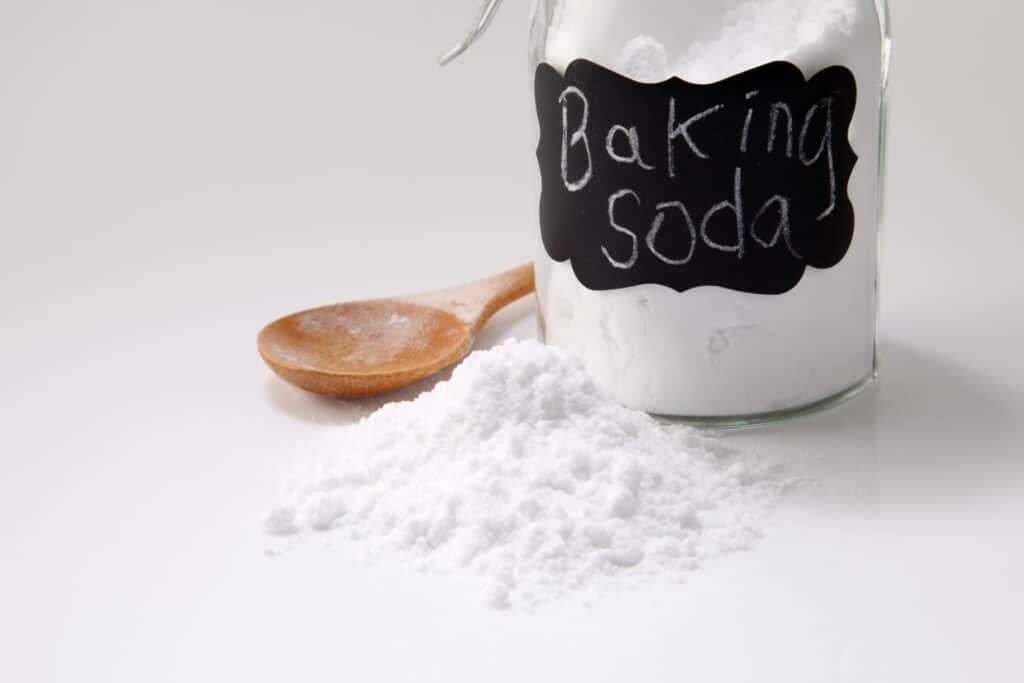
Baking soda is a fantastic alternative to white vinegar in softening towels. Similarly, baking soda breaks down residues from the fabric. And the great thing with baking soda is that it can also remove any odors as well.
The only downside of baking soda is making clothes dull. Also, avoid mixing it with some other cleaning agents such as vinegar, as mixing neutralizes both making them ineffective. To start, add half a cup of baking soda to the wash in the first rinse, and let it work its magic of dislodging the residues.
Softening With Borax
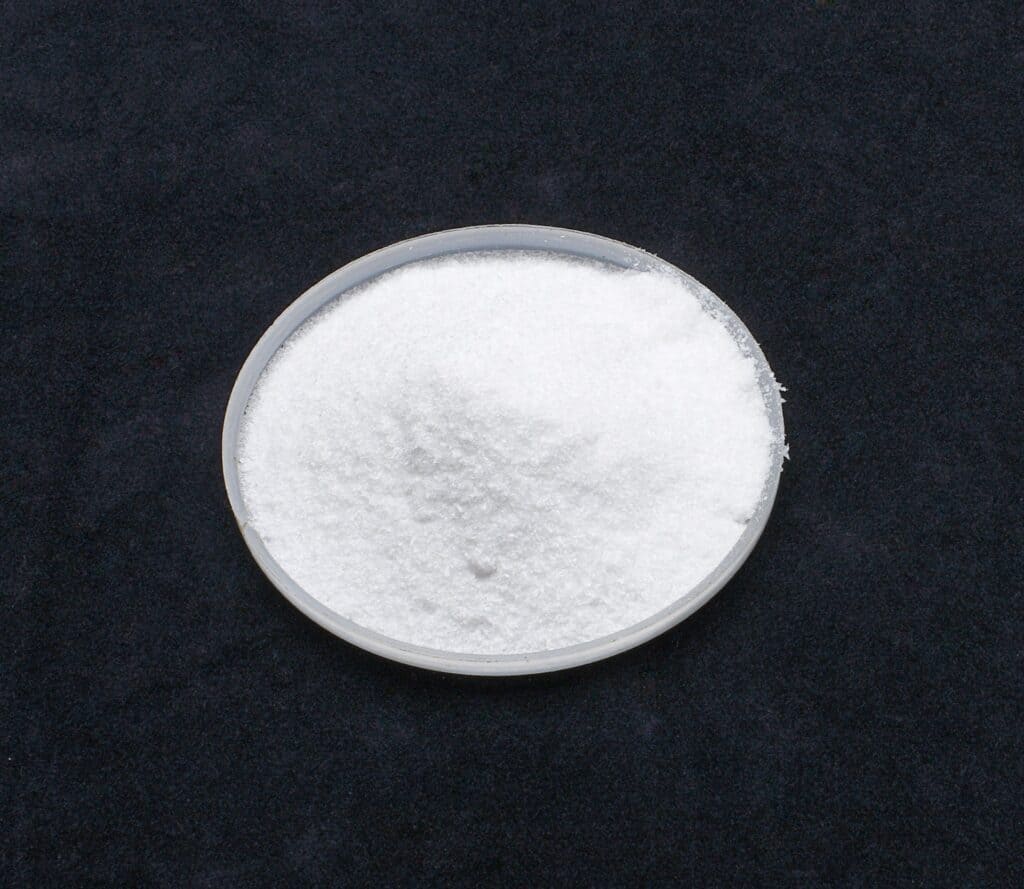
Borax is a powerful cleaning agent that works by softening hard water. Recall one of the main reasons for towels becoming dingy is hard water. So water softening will dissolve the chemicals in the hard water that lodge within the towel fibers.
Sodium borate, commonly known as borax, is one of the water-softening substances that work this way. By breaking down the mineral ions, namely Calcium and magnesium, they boost the cleaning ability of the detergent.
That way, they can easily dislodge the residues, restoring fluffiness. Adding a ½ cup of borax to your normal load is sufficient for this purpose.
I recommend that you check out this article I wrote on mixing borax with detergent before you start using it, as it can be dangerous if you don’t handle it safely.
Wash With Hot Water
Most washing machines have washing and rinsing temperature settings. When it comes to washing towels, a hotter setting is the most effective in stripping the towel fibers off all residues. Once done, rinse with cold water before drying normally. Cold rinsing makes the folded towel fibers fluff.
However, remember, like all fabrics, you need to read the wash instruction label. Some of the towels may not be compatible with hot water laundry. Especially be careful with color towels, as some may bleed dye if exposed to hot wash.
Using Dryer Balls
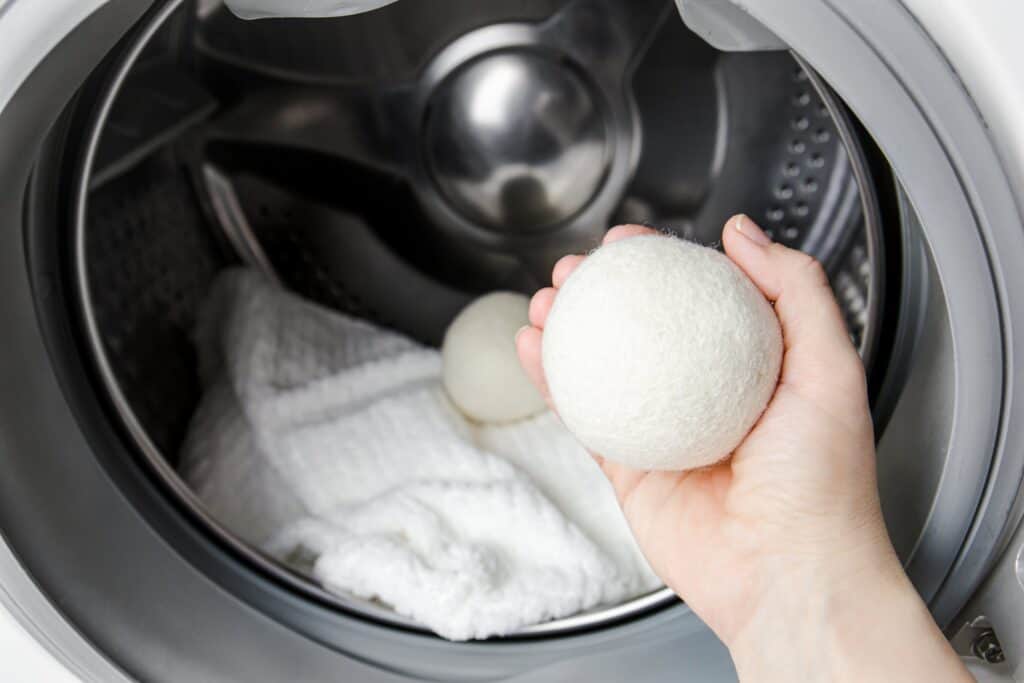
Dryer balls are known for quickening clothes drying. But did you know you can use dryer balls to make your towel fluffier too? Toss a few dryer balls into the dryers after the towel, and run the usual dryer temperature settings.
As the towel tumbles in the dryer, the balls roll over the towel surface, fluffing and softening the towel bristles. For better effect, you can place the balls in between two towels instead of just throwing them in the drum. This means the balls go to work immediately, as the balls are already in between towel surfaces to be fluffed.
Brushing
Another trick is to brush the towel to revive the collapsed or stiffened towel bristles. To do this, lay the towel flat on a bed and gently brush the bristles using a hairbrush. If satisfied with the results, turn it to the other side and repeat the process. You can then fold carefully as explained above for storing.
How to Prevent Towels From Losing Their Fluffiness

Restoring the fluff of towels is all so great. But if you can find ways of preventing it from losing the fluff, that should be even better. Consider some of the tips below.
Avoid Using Fabric Softeners and Dryer Sheets
I know this sounds counterintuitive because the work of these items is to make clothes softer and kinder to the skin. Unfortunately, this doesn’t apply to towels. Using fabric softeners may appear to work in the short term and may actually make your towel feel softer.
But over time, they end up making them harder. What happens is that the waxes and other chemicals in the fabric softeners and dryer sheets clog the towel bristles, creating an impervious coat. This reduces their absorbency and softness.
Go Easy on Detergents
Detergent overuse is one of the main reasons towels become stiff. This means the detergent you use to remove soil ends up soiling the towel instead. Over time, detergents build up in the towel fiber, accumulating absorbency-blocking residues.
Furthermore, detergent overuse creates suds problems reducing the effects of rinsing, which eventually dries on the towels. One of the common ways people overload washers is by using the dosage recommended by the detergent makers.
Often this dosage is two times the amount you need for your normal laundry load. But how will they sell more if you do not deplete your supply sooner? That is why one hack of approximating the right dosage is to use half recommended on the detergent label.
Do Not Overload the Washer
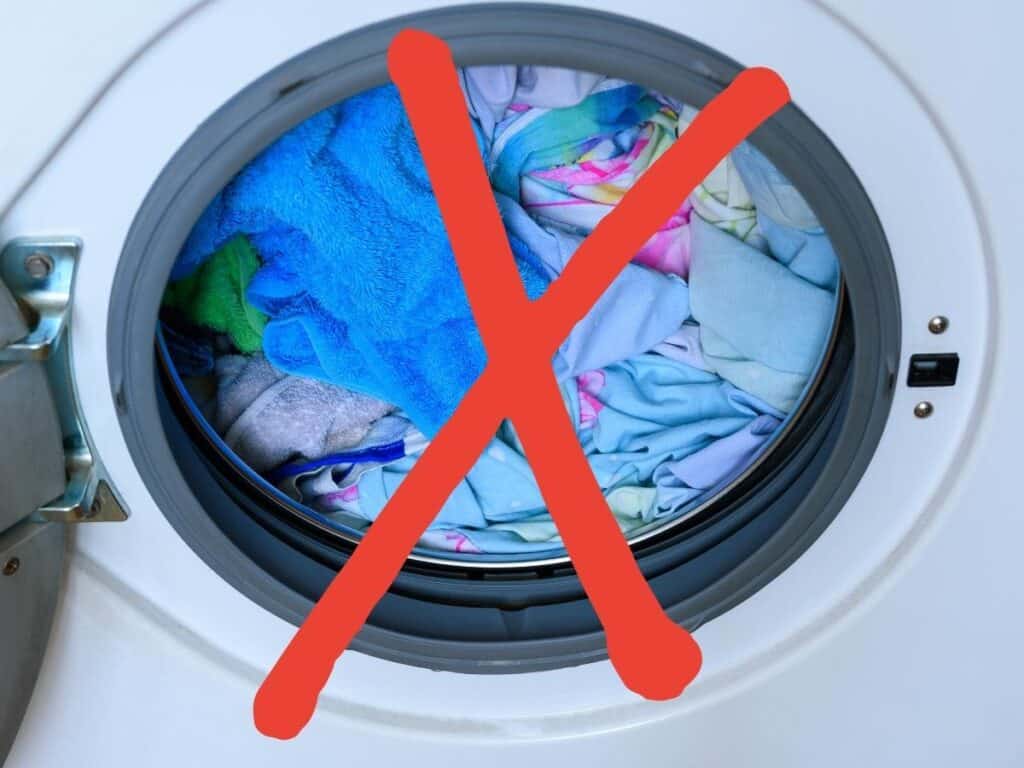
A stuffed washer denies the towel space to turn around, get scrubbed, and also rinse properly. Improperly rinsed detergent on the clothes makes them feel hard when they dry on the towel. To avoid this problem, load half your usual load during washing, rinsing, or drying cycles.
Ideally, towels should be washed on their own. Avoid washing towels with other clothes with zippers, buttons, and other protruding appendages. Doing this may strip off the protruding fibers of the towel, making them tougher.
Avoid Undiluted Detergent on the Towel
This is especially the case with powder detergents. Most do not dissolve well in water, making them stick to the towel fiber no matter how hard you rinse. If you must use this type of detergent, then try to add the water into the washer drum, followed by the detergent.
Next, agitate the mix properly to ensure the detergent not only dissolves but uniformly as well. This prevents soap or detergent build-up on the towel fibers. Though we emphasize this more for powder detergents, the same applies to all detergent types. All undiluted detergents deposit residues on the towels and are hard to rinse and make towels less fluffy.
Be Careful With Drying
Ensure your clothes are completely dry every time you wash, or you use them. Storing them without adequate drying will attract mildew and cause the bristles to clamp together.
Dumping wet used towels is even worse as it creates the right environment for the growth of odor bacteria. If you use a towel, hang it in an airy place to ensure it is sufficiently dry before storing or using it next time.
When it comes to tumble-drying, even more care is required over the damage to the towel fibers. If subjected to frequent heating, they weaken and peel off sooner, making the towel feel rough.
To avoid this, use gentle heat settings or line dry your towel under shade. This makes the drying process a gradual process, rather than the instant shock drying that is responsible for the fiber hardening.
Properly Store Your Towel
How you store your towel goes a long way in maintaining its fluffiness. The common practice is to fold it two or four times before storing it. This method creates a sharp edge that feels scratchy when using the towel.
If you must fold this way, avoid pressing them down with your hands to prevent sharpening the edges. Also, you might want to stack fewer towels in the closet.
But the most recommended method is to roll the towel instead of folding it, as it prevents the problem of the sharp edges. To roll the towel this way, first, hold both corners of the short side of the towel with one hand on each corner in front of you.
Fold towels the right way
When in this position, the long side flows downwards towards your feet. Next, fold it into two by joining the two corners of the short ends together. This way, the towel appears like a narrow strip.
You can then roll back the towel in your hand towards you forming a cylindrical roll. All towels that are folded in this fashion can be side by side for easy retrieval. Also, when stored this way, the problem of rough edges is eliminated, and its fluffiness is maintained.
More on folding towels here.
Avoid Frequent Washing
Washing towels after every single use is not desirable. After all, other than getting wet, the towel will still be clean. Frequent washing can only wear them out sooner and make them rough. To avoid this, ensure you reuse towels up to four times before washing.
But this also depends on how you handle it after using it. If you just dump it into the laundry hamper, you will be creating a recipe for the growth of mold.
To avoid mold or musty smell, air-dry the towel thoroughly before storing.
Use Less Bleach
Bleach is great for whitening clothes but for towels if you want to make them fluffy. Other than removing stains and soil bleach, wear out the clothing fabrics. For towels, as the bristles wear out, they lose their fluffiness and absorbency.
Signs Your Towel Needs Replacement
While maintenance of the towel is essential, this can only go too far. With time, the towel will undergo natural wear, and at one time, you will need to retire them for new ones. But how do you know when your towels are beyond their useful life?
As a rule of thumb, towel replacement is recommended every two years.
However, if you are looking for dead giveaway signs, here are a few below.
- Reduced absorbency
- Torn or appearance of holes
- Rough or stiff appearance
- Towels become lighter due to fraying off of bristles.
- Continuous odor even with regular washing.
Frequently Asked Questions
How Can I Soften Towels by Line Drying?
Drying towels on a clothesline is sometimes preferable to tumble drying when it comes to maintaining their fluffiness. Tumble dryers harden the towel bristles over time. To ensure towels are soft when line drying, wring out the excess water and then gently shake them to fluff the fabric bristles. Even better, hang them on a windy day as the agitation by the wind will help in softening.
Which Towel Do Fabrics Stay Fluffy for Long?
The fluffiest towels are those made of cotton or rayon. Typically Pima or Egyptian cotton is the best cotton. In general, such cotton is quite absorbent and stays soft and fluffy longer than other materials. When compared with cotton, rayon is even more fluffy. Regardless, all towels lose their fluffiness with time. The great thing is with these, you require less effort to maintain their softness.
How Can You Tell a Good Quality Towel?
One of the parameters of gauging the quality of a good towel is its weight. This is denoted in Grams Per Meter(GSM). On the lower end of the spectrum is the GSM 300-400, which is a light, less fluffy, and less absorbent towel.
On the other hand, the range of GSM 450-600 is thicker and more absorbent towels. As you can see, the heavier the towel, the fluffier and more absorbent it is. This also means they require less maintenance to keep them fluffy.
Next, you can check out my guide on how to use vinegar in your washing, or how to wash microfiber.

I’m an expert wardrobe organizer and a bit of a clean freak. I created this website and its YouTube channel to share practical guides about laundry and organizing. My teachings have been featured in multiple large news publications, and I’ve self-published two wardrobe organizing books and an entire course on the subject.
